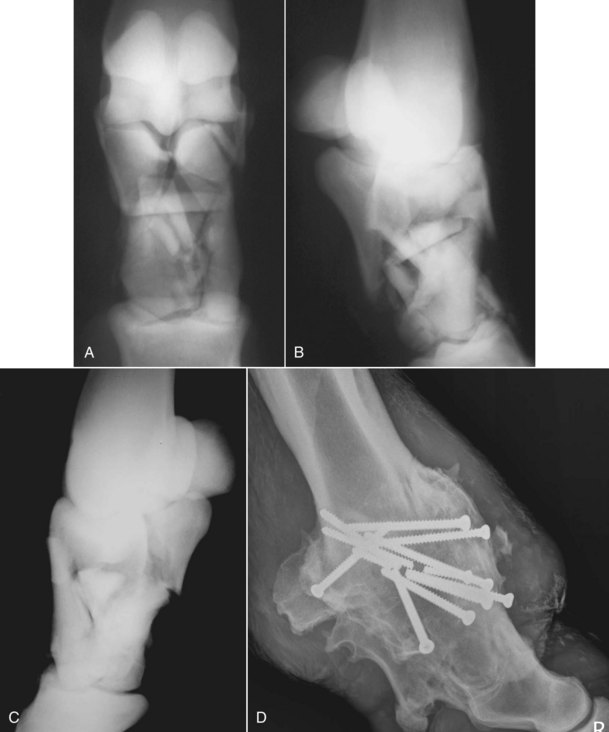Chapter 87External Skeletal Fixation
History and Development
Using external skeletal fixation to treat fractures in the horse has only recently received some enthusiasm from equine surgeons. Although external skeletal fixation of fractures works well in small animals and has undergone periods of enthusiastic use, these same devices do not withstand the loads of weight bearing in an adult horse and therefore are not versatile enough to meet the needs of equine surgeons. Using transfixation pins in plaster, transfixation pins in fiberglass casts, or an external skeletal fixation device, has allowed salvage of some horses with difficult fractures that could not have been saved using internal fixation (Figure 87-1).




